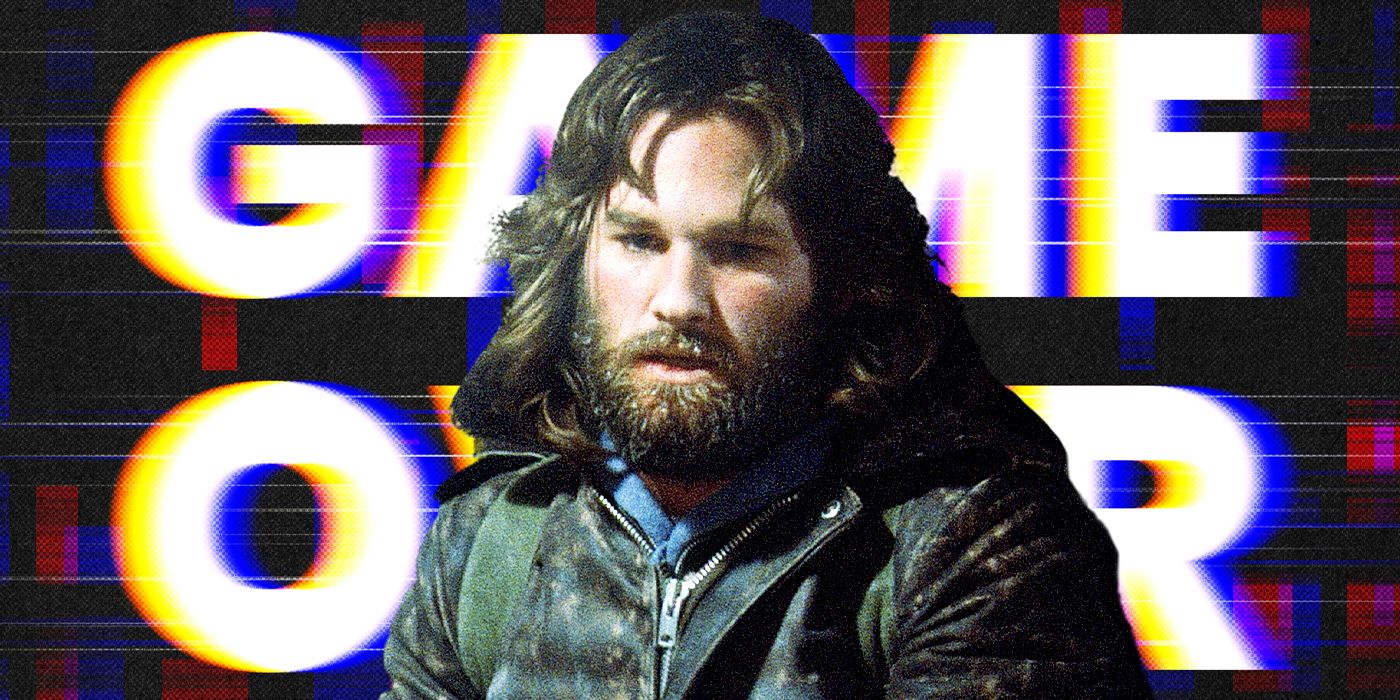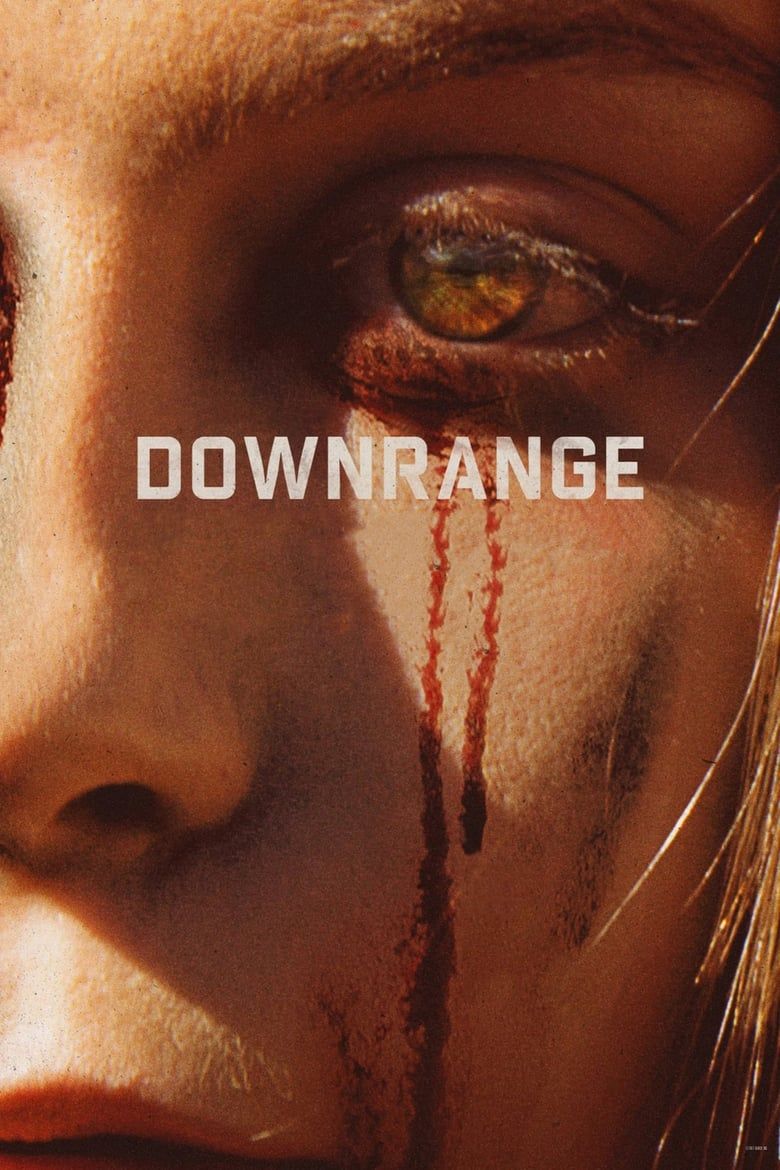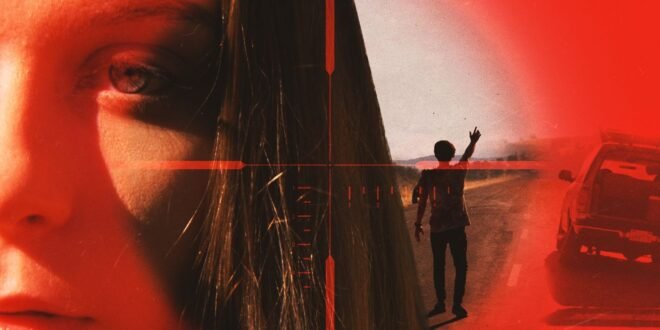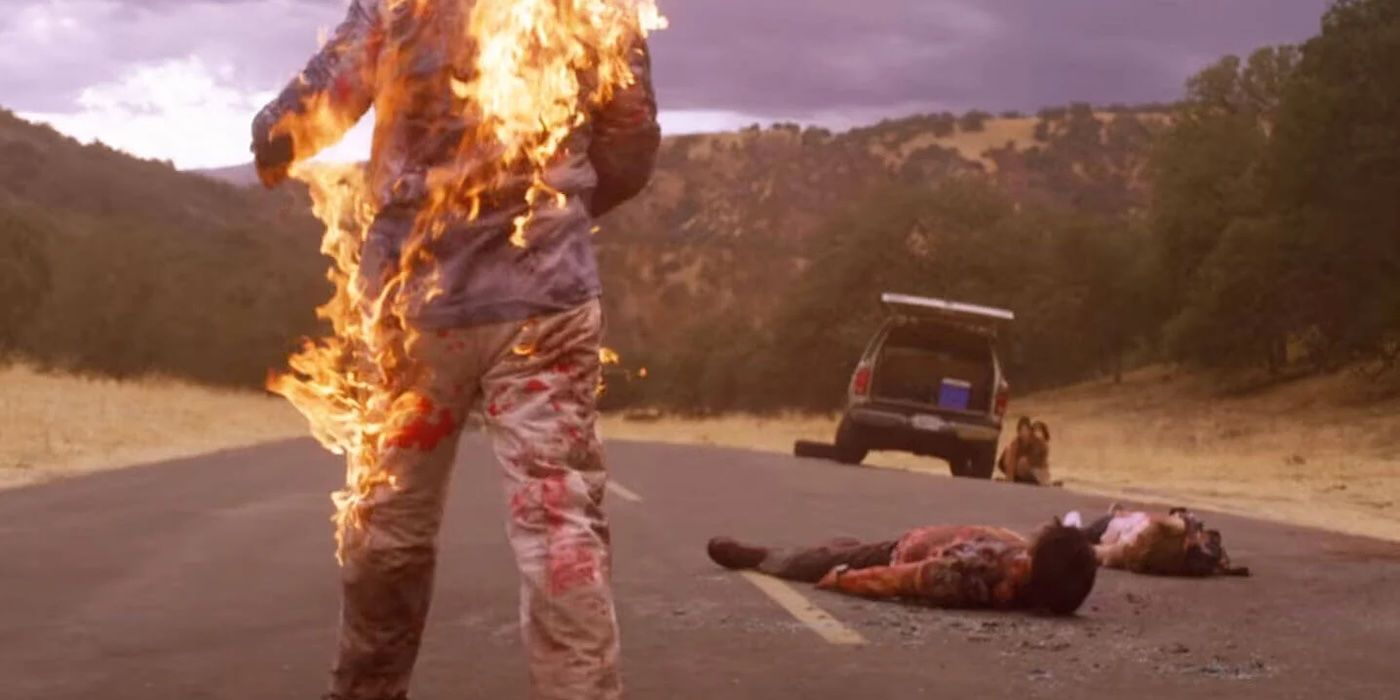In 2017, cult director Ryûhei Kitamura offered a great installment for the TIFF Midnight Madness section, Downrange. The film is a rare genre mix that notably takes the bare bones of a slasher and combines them with survival horror tropes for maximum tension and lots of bloody kills. Downrange starts with the most common slasher situation possible — a group of young people find themselves in a very wrong place at the wrong time. While carpooling, their car breaks down on a deserted road in the middle of nowhere. Soon, they realize it wasn’t an accident: a sniper is hiding somewhere nearby, waiting to take them out one by one. Even though the villain here doesn’t have a traditional slasher weapon in the form of a sharp object, this campy and very bloody Grand-Guignol still gives us familiar tropes — only to pull the rug from under the viewers’ feet in the final few minutes.
‘Downrange’ Launches the Story with Two Brutal Kills
A few years prior, Kitamura, who is best known for cult classics, Versus, and The Midnight Meat Train, had already made a slasher, No One Lives, where he demonstrated that he knew the necessary conventions of the genre and how to subvert them. He later experimented with the slasher canon again in his 2022 movie The Price We Pay, also with curious results. In Downrange, he wastes no time in moving the plot right along. Giving the car a flat tire before the one-minute mark, Kitamura and his co-writer Joey O’Bryan then deliver a masterclass in effective exposition, producing just enough information for us to care about these people. Then, the authors unceremoniously dispose of two major characters in the space of ten minutes — thus, recreating their own version of the trademark opening kill.

Related
The 10 Best Horror Movies Where Everyone Dies, Ranked
Death’s generally inevitable, but these movies take it to another level.
As slashers — like their predecessor, giallo — are generally known for their gory and inventive kill scenes, it may seem like Downrange shouldn’t fare very well in that department. After all, covering between an SUV and driftwood doesn’t provide much cinematic variety. And since the authors make the villain trade a machete for a trivial rifle with a laser scope, it might seem like a downgrade in terms of originality when it comes to horror movie weapons. Not to worry: Kitamura, who has been specializing in graphic onscreen violence since the 90s, quickly graces us with a POV shot through a large hole in a man’s head. This not only establishes the level of bloodshed to come but also links the film back to the slasher canon since survival horrors usually aren’t known for such exuberant kills.
Kitamura Uses Popular Slasher Tropes But Ultimately Gives Them a Grim Twist
The villain in Downrange is a classic slasher bad guy. Someone of the Jason Voorhees variety, a faceless brutal force that cannot be negotiated or reasoned with, a machine delivering effective kills. Out of the slasher canon, the nameless assailant in Kitamura’s film is, in fact, closest to Jason. Not only does the rifleman remain silent and have no motive for his actions, but his whole disposition is also reminiscent of the Crystal Lake killer. While Freddy and Michael Myers terrorize suburbia, Jason tends to stick closer to nature. Stalking the woods, he becomes almost an invincible mythical figure, the embodiment of nature’s wrath towards the ones who venture there. The rifleman in Downrange also uses the woods as his hunting ground. In his camouflage getup, covered in leaves and hiding between trees, he almost looks like a deranged, tech-savvy, and heavily armed forest spirit. Up until the very end, he’s also pretty much omnipotent.
Every slasher needs to have a Final Girl, and Downrange has two candidates for the title. Each represents the two most common archetypes of the trope. First, there is the tough Keren (Stephanie Pearson), who has a set of useful skills and knowledge due to her background as an army brat. On the Final Girl scale, she would grade somewhere between Nancy Thompson and Erin from You’re Next. And then, there is Jodi (Kelly Connaire), who doesn’t have any particular abilities, just a lot of willpower. She’s a heroine who’s closer to the genre roots — someone like Jess from Black Christmas or Laurie Strode. None of this will matter in the end though.
For most of its runtime, Downrange comes off as a kind of horror that doesn’t really offer any particular high concept or commentary. As it steamrolls towards the finale, easily disposing of innocent bystanders and hapless police officers, it seems like the conclusion will center around the question of what prevails in the end: Keren’s impressive training or Jodi’s natural tenacity. And it’s where Downrange manages its biggest twist, which comes into collision with the supposed cathartic nature of horror. The ending exposes the senseless nature of violence and survival, showing that it’s not a matter of transgression and punishment, or skills and the will to live — it’s pure dumb luck or lack thereof. Even revenge, the bread and butter of genre films, gets derogatory treatment here. Sometimes revenge is a dish that just explodes right in your face.

- Release Date
-
March 1, 2018
- Runtime
-
90 minutes
- Director
-
Ryûhei Kitamura
- Writers
-
Ryûhei Kitamura, Joey O’Bryan
- Producers
-
Taro Maki
Source link


